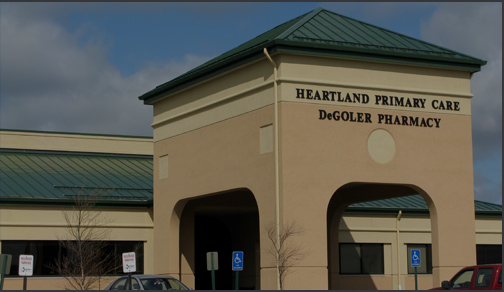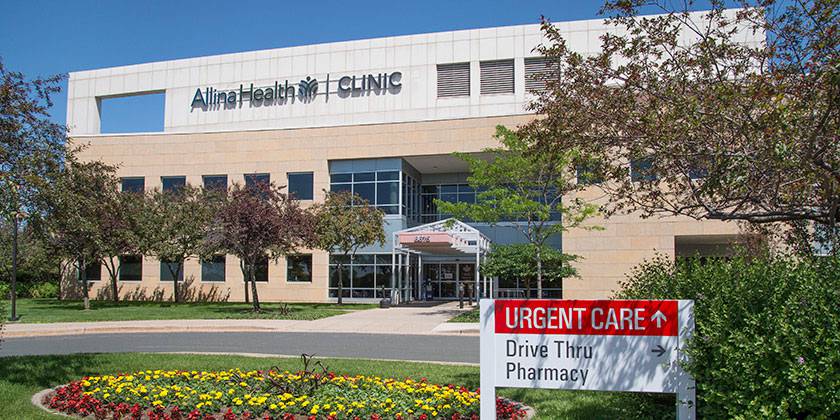How Our Clinic Ensures Top-Notch Urgent Care for Every Patient
How Our Clinic Ensures Top-Notch Urgent Care for Every Patient
Blog Article
The Relevance of Urgent Care Centers in Linking the Space In Between Medical Care and Emergency Situation Services
Urgent treatment centers have actually become an important element of the healthcare landscape, successfully resolving the crucial requirement for instant medical interest without resorting to emergency solutions. By supplying look after non-life-threatening conditions, these facilities assist to alleviate the problem on emergency clinic and enhance individual accessibility to prompt therapy. Their expanded hours and diverse services deal with a growing population looking for options to typical health care. The advancing function of urgent care facilities increases vital inquiries concerning their assimilation within the more comprehensive healthcare system and the ramifications for person outcomes and resource allotment.
Overview of Urgent Care Centers
Urgent treatment facilities have ended up being a necessary element of the medical care distribution system, offering obtainable medical services for non-life-threatening problems. These facilities typically operate outdoors conventional workplace hours, offering patients an option to emergency clinic and health care settings. Clients seeking urgent treatment usually present with problems such as minor injuries, infections, or illnesses that require prompt attention yet do not pose a prompt risk to life or limb.
Immediate care centers are staffed by a series of healthcare professionals, including physicians, registered nurse experts, and medical professional aides, that are geared up to diagnose and treat numerous medical concerns. They commonly feature analysis tools such as X-ray makers and laboratory solutions, allowing them to provide extensive care on-site.
The establishment of urgent care facilities has been affected by the raising demand for timely medical services in a fast-paced culture, where clients may struggle to protect consultations with main care carriers. Therefore, these facilities intend to alleviate blockage in emergency departments, improving overall health care effectiveness. In addition, urgent care centers usually serve as a bridge between medical care and emergency situation services, making sure that clients get ideal treatment customized to their specific clinical demands.

Benefits of Urgent Treatment Services
Accessing timely healthcare is a considerable benefit of immediate care solutions. These facilities give prompt attention for non-life-threatening problems, efficiently lowering wait times compared to typical emergency situation departments. Clients seeking treatment for small injuries, illnesses, or urgent wellness problems can get treatment without the lengthy hold-ups frequently connected with hospital gos to.
An additional trick advantage is the prolonged hours of procedure. Several immediate care facilities are open evenings and weekends, suiting clients who might not have the ability to visit their key treatment service provider throughout standard office hours. This flexibility makes immediate care an easily accessible option for those with hectic schedules or abrupt health concerns.
Additionally, immediate care centers typically use a broad variety of services, including analysis testing, X-rays, and basic research laboratory solutions. This detailed approach enables quick diagnosis and treatment, boosting patient contentment.
In addition, urgent treatment facilities are generally a lot more cost-efficient than emergency clinic, making them an appealing alternative for individuals without insurance policy or those with high-deductible strategies. Overall, immediate care solutions play a critical function in providing obtainable, timely, and budget-friendly treatment.
Contrast With Main Care
Usually, clients usually evaluate their alternatives between immediate care centers and medical care carriers when seeking medical interest. Both offer essential roles in the medical care system, yet they differ substantially in price, ease of access, and extent.
Medical care suppliers are normally the initial factor of call for people, concentrating on lasting wellness administration, preventive care, and persistent disease management. They use continuity of care, fostering a patient-provider relationship that enables detailed health assessments and tailored therapy strategies. Scheduling a visit can be taxing, frequently needing days or weeks in advancement. Urgent Care.
In comparison, urgent treatment centers provide instant take care of non-life-threatening problems that require punctual attention, such as minor injuries or infections. These facilities frequently run outside of standard office hours, suiting people who might not have the ability to see their medical care provider during regular click for info service times. Furthermore, immediate treatment is typically extra economical than emergency area visits, making it an attractive option for those with limited health care gain access to.
Ultimately, while urgent care facilities and health care suppliers both add to client wellness, they deal with unique demands, making it critical for patients to figure out which option finest straightens with their scenarios.
Emergency Providers Communication
The communication between immediate treatment facilities and emergency situation services is a vital aspect of the healthcare landscape, especially when patients face scenarios that might intensify in extent. Immediate care facilities act as a bridge between health care and emergency situation departments, attending to non-life-threatening conditions that need prompt attention. This collaboration boosts person end results and maximizes source allocation within the healthcare system.
When individuals provide with not deadly however immediate problems, urgent care facilities can effectively manage their demands, alleviating congestion in emergency clinic. When a patient's condition surpasses the extent of urgent care therapy, Facilities equipped with diagnostic abilities can facilitate prompt referrals to emergency situation solutions. This smooth communication aids ensure that patients obtain the proper degree of treatment without unnecessary delays.
Moreover, efficient communication between immediate treatment service providers and emergency services is critical. Sharing individual details and therapy histories fosters coordinated treatment, minimizing the threat of repetitive examinations and procedures. As medical care remains to advance, the dynamic relationship in between immediate care facilities and emergency situation solutions will play a pivotal function in improving individual care effectiveness, contentment, and general health end results within the area.
Future of Urgent Treatment Facilities
As medical care demands evolve, the future of immediate treatment centers is poised to end up being increasingly integral to the total medical ecological community (Urgent Care). These facilities are most likely to broaden their functions by including sophisticated innovations, such as telemedicine, expert system, and digital health document integration. This will certainly boost client access and improve care control between immediate treatment, medical care, and emergency situation services
Moreover, immediate treatment centers are anticipated to diversify their solution offerings to consist of preventative treatment and persistent illness administration. This change will certainly position them as essential components in managing population health, minimizing the view burden on emergency departments, and addressing spaces in primary care schedule.
The growing pattern of value-based treatment will certainly additionally accelerate the improvement of immediate care facilities, triggering them to concentrate on individual end results and contentment. Facilities may additionally embrace collective method models, functioning very closely with professionals and medical care carriers to ensure comprehensive client management.
Verdict
Finally, urgent treatment centers serve a crucial function in the health care system by giving immediate accessibility to therapy for non-life-threatening conditions, successfully easing pressure on emergency services. Their extended hours and varied variety of solutions boost person comfort and complete satisfaction, while also making sure suitable treatment distribution. As healthcare needs remain to advance, the function of immediate treatment centers will likely become significantly considerable, more bridging the void in between primary treatment and emergency solutions.
The facility of urgent treatment facilities has been affected by the raising demand for prompt clinical solutions in a fast-paced society, where people may have a hard time to safeguard appointments with primary treatment companies. Additionally, immediate treatment centers typically offer as a bridge in between primary care and emergency web link solutions, making certain that patients obtain ideal care tailored to their certain clinical demands.
Numerous urgent care facilities are open nights and weekends, fitting individuals that may not be able to visit their main treatment provider during typical office hours (Urgent Care). As healthcare continues to evolve, the vibrant relationship between immediate treatment facilities and emergency situation services will play a pivotal duty in boosting client care effectiveness, satisfaction, and general health and wellness results within the neighborhood

Report this page